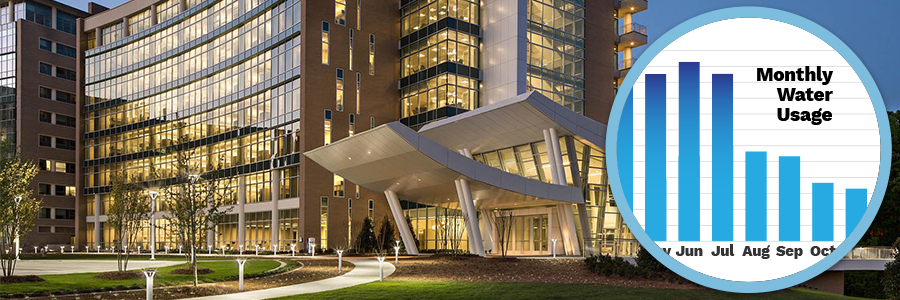
In our rapidly changing climate where extreme weather events are becoming more common and freshwater is growing scarcer, it’s important to ensure sites and properties are as sustainable and resilient as possible. A big part of this is managing water use properly to eliminate water waste and prevent costly property damage. Thankfully, there are several smart water management best practices to conserve water and make sites more sustainable and resilient:
Capture and reuse rainwater
Rainwater harvesting involves collection of run-off rainfall from roof tops into gutters and channeling water from downspouts into storage vessels.
These systems can collect, filter, divert, store, and distribute water in a landscape. Doing so will ease the strain on municipal water supplies, reduce risk of flooding on properties, and fight erosion and contamination. A great way to reduce fresh water use is by irrigating with alternative water sources like harvested rainwater.
Use rebates and savings incentives
Each state develops special water-saving rebates and incentives for organizations
to conserve water. These incentives touch everything from smart irrigation controllers to low flow toilets to grants. Look at the EPA’s WaterSense rebate finder to find out what’s available in your area.
Switch to smart irrigation controllers
Outdoor water use in the US averages more than 9 billion gallons per day, with much of that going to irrigation and up to 50% of that being wasted through overwatering (Source: EPA).
Smart irrigation attempts to combat that waste by tailoring watering schedules and run times to the specific landscape. Smart controllers monitor weather, soil conditions, evaporation, and plant water use and then adjust watering schedules accordingly, so that not a drop is wasted.
These smart controllers help businesses rise to meet the challenges of our changing climate by eliminating water waste — not only keeping landscapes healthy but protecting properties from overwatering damage and helping organizations save water and money.
Use leak monitoring and detection
While leaks are often invisible, they can end up being painfully expensive and wasteful. For example, a running toilet can waste a whole gallon of water in less than 30 seconds and a leaky faucet can waste more than 3,000 gallons per year. All these sneaky leaks and breaks will add up, but sites that use leak monitoring will never be surprised by large water bills down the line. The benefits of leak monitoring are countless and include reduced contamination, damage, and water outages. Leak monitoring can even extend the life of facilities.
Install water efficient appliances
Have you installed low-flow toilets and faucets in your facilities? Do you have high-efficiency drips and nozzles? There is still so much outdated equipment in buildings that uses water inefficiently. Thankfully, WaterSense makes it easy to find water-efficient products that meet the current EPA standards, saving your business water and money.
Optimize cooling towers
Cooling towers are large consumers of water, and therefore an area where major savings are possible. Cooling towers lose water through evaporation, drift, basin leaks and overflows, or blowdown — and all water leaving a cooling tower must be replaced by make-up water. The less make-up water you need, the more water you will save. To save water throughout the cooling process, carefully track and monitor the quantity of blowdown and make-up. You can do so with flow monitors that document how much water comes into the cooling tower and how much water leaves it.
Manage your water budget
Water budgeting starts with water visibility. It’s important to create and stick to a water budget, so you can create transparency around your water usage and costs.
Smart controllers also allow you to set monthly water budget limits. You can input the maximum amount of water spend you have per month and set up alerts or automatically stop irrigating once you’ve hit your monthly allotment.
HydroPoint offers smart irrigation solutions and leak detection and water use analytics services to make it easier for sites to conserve water, prevent property damage, and be more sustainable. Ready to learn more about making your sites as sustainable and resilient as possible? The tips you just read are from our downloadable guide Creating Sustainable and Resilient Sites: How to Protect Properties from Drought and Climate-Driven Issues.

